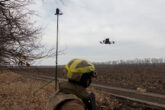November 27, 2018
Against the Great Powers: Reflections on Balancing Nuclear and Conventional Power
The fundamental problem facing U.S. national security — and indeed grand — strategy is clear: The United States seeks to extend deterrence to dozens of allies in parts of the world that are increasingly shadowed by Russia and China, each of which fields survivable nuclear arsenals and conventional forces that are more and more formidable in their respective regions. An increasingly powerful China seeks ascendancy in Asia and ultimately beyond, while Russia has recovered some of its military potency and aspires to upend or at least substantially revise the post-Cold War European settlement. Both China and Russia have developed strategies and forces designed to enable them to attack or suborn U.S. allies or partners and make such an effort potentially worth the risks and costs. Their aspirations place them at odds — or at least in tension — with U.S. interests in defending its alliance architecture, and their increased capability to pursue these aspirations makes them more dangerous and the possibility of war with them more likely.
In the face of these challenges, Washington wants to deter and, if necessary, defeat attacks on its allies by Russia or China. The problem is that these alliances are, while of course important, still fundamentally secondary interests for the United States. Yet Washington wisely seeks to defend them from states that have the assured ability to conduct nuclear strikes on the American homeland, which, naturally, represents the profoundest type of peril to the nation’s ultimate primary interest: its survival as a functioning society.
Read the full article in Texas National Security Review.
More from CNAS
-
Defense / Transatlantic Security
When Defense Becomes Destruction: Austria-Hungary’s Mistake and Ukraine’s RiskThis article was originally posted on War on the Rocks. The southeastern Polish city of Przemyśl, with its elegant 19th century Habsburg-era train station, remains one of the ...
By Franz-Stefan Gady
-
Defense / Transatlantic Security
Ukraine’s Catch-22 MomentThis article was originally published in the Financial Times. In Joseph Heller’s wartime classic, Catch-22, the protagonist Yossarian seeks out the US army surgeon Doc Daneeka...
By Franz-Stefan Gady
-
CNAS Insights | Budgetary Own Goals Undermine “Speed and Volume”
On November 7, Secretary of Defense Pete Hegseth laid out a plan to overhaul the Department of Defense’s (DOD’s) acquisition system. Placing an emphasis on delivering new capa...
By Philip Sheers, Carlton Haelig & Stacie Pettyjohn
-
Drones: Who Is Making the New Weapons of War?
From Ukraine and Russia to Gaza and Sudan, drones have become a key weapon of war. Which companies are making them, and profiting from this rapidly expanding but controversial...
By Stacie Pettyjohn




